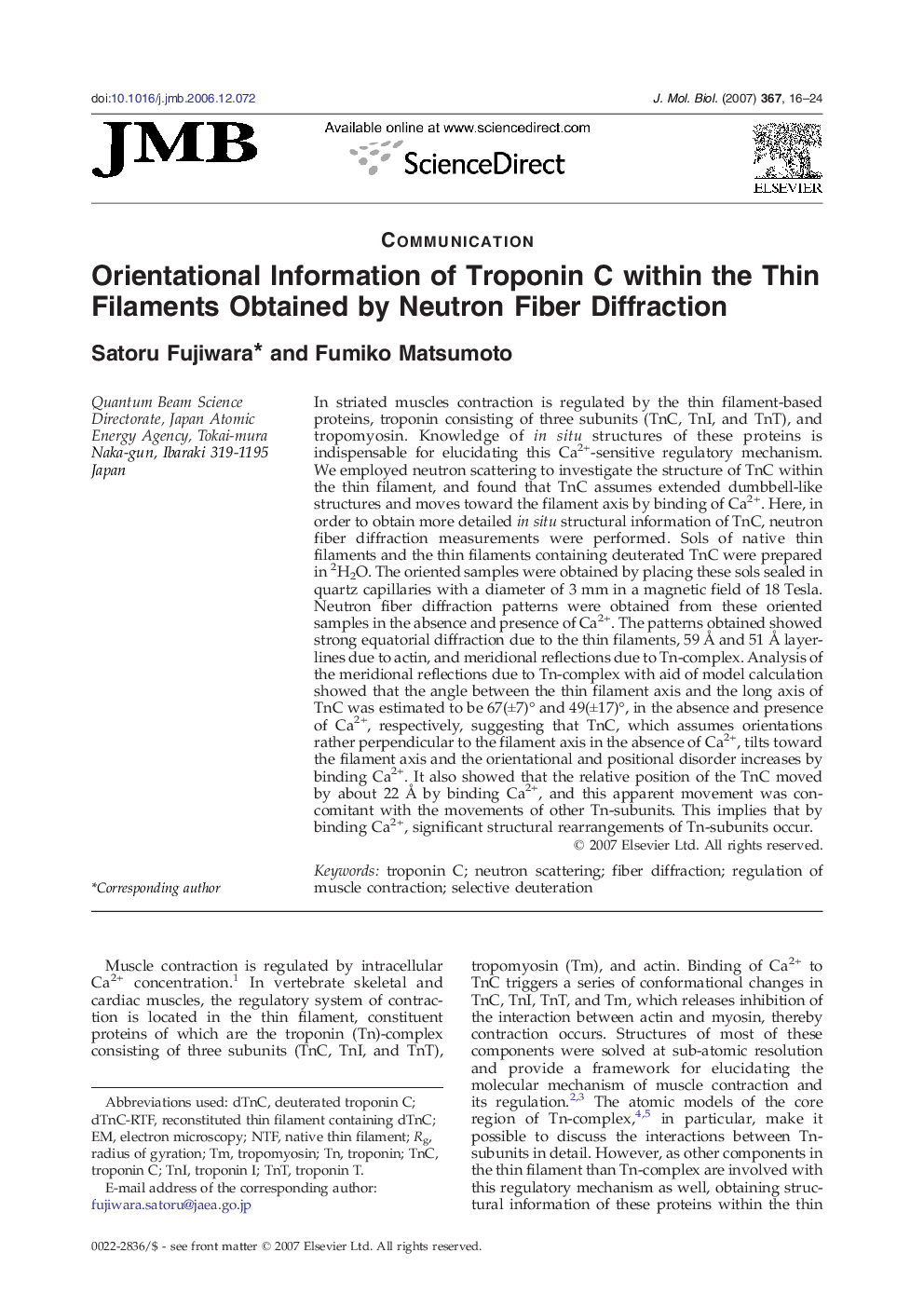| کد مقاله | کد نشریه | سال انتشار | مقاله انگلیسی | نسخه تمام متن |
|---|---|---|---|---|
| 2188605 | 1096179 | 2007 | 9 صفحه PDF | دانلود رایگان |

In striated muscles contraction is regulated by the thin filament-based proteins, troponin consisting of three subunits (TnC, TnI, and TnT), and tropomyosin. Knowledge of in situ structures of these proteins is indispensable for elucidating this Ca2+-sensitive regulatory mechanism. We employed neutron scattering to investigate the structure of TnC within the thin filament, and found that TnC assumes extended dumbbell-like structures and moves toward the filament axis by binding of Ca2+. Here, in order to obtain more detailed in situ structural information of TnC, neutron fiber diffraction measurements were performed. Sols of native thin filaments and the thin filaments containing deuterated TnC were prepared in 2H2O. The oriented samples were obtained by placing these sols sealed in quartz capillaries with a diameter of 3 mm in a magnetic field of 18 Tesla. Neutron fiber diffraction patterns were obtained from these oriented samples in the absence and presence of Ca2+. The patterns obtained showed strong equatorial diffraction due to the thin filaments, 59 Å and 51 Å layer-lines due to actin, and meridional reflections due to Tn-complex. Analysis of the meridional reflections due to Tn-complex with aid of model calculation showed that the angle between the thin filament axis and the long axis of TnC was estimated to be 67(±7)° and 49(±17)°, in the absence and presence of Ca2+, respectively, suggesting that TnC, which assumes orientations rather perpendicular to the filament axis in the absence of Ca2+, tilts toward the filament axis and the orientational and positional disorder increases by binding Ca2+. It also showed that the relative position of the TnC moved by about 22 Å by binding Ca2+, and this apparent movement was concomitant with the movements of other Tn-subunits. This implies that by binding Ca2+, significant structural rearrangements of Tn-subunits occur.
Journal: Journal of Molecular Biology - Volume 367, Issue 1, 16 March 2007, Pages 16–24